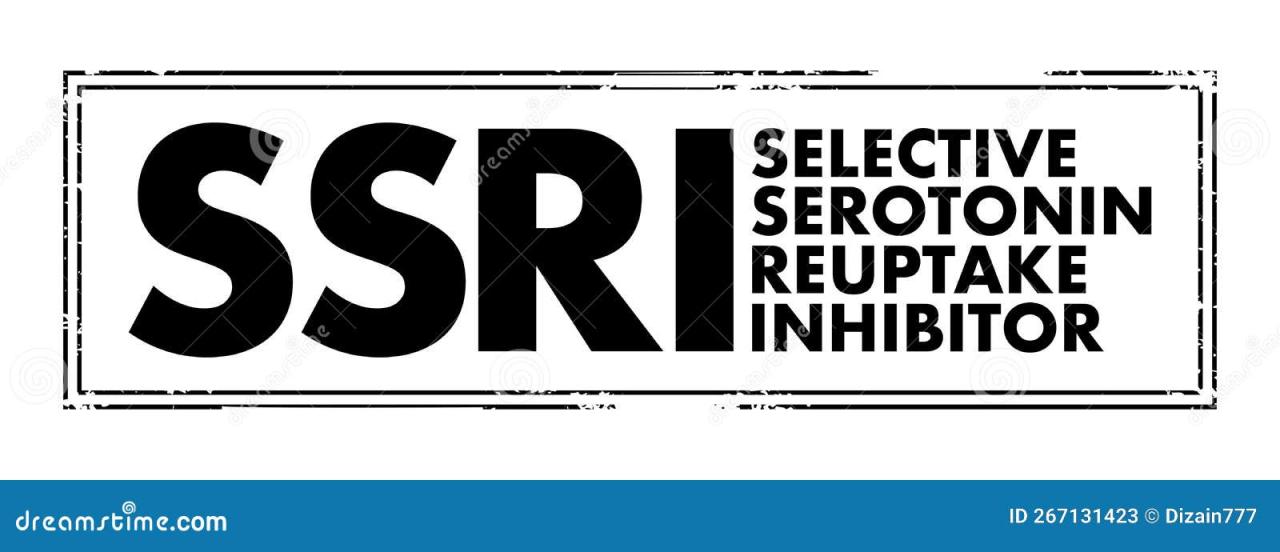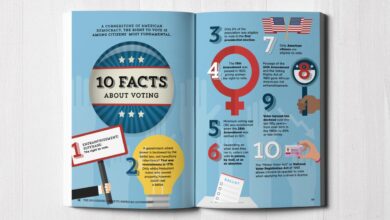
What is a Whitepaper A Comprehensive Guide
What is a whitepaper? It’s a persuasive document, meticulously researched and crafted to educate and inform, often aimed at a specific audience. More than just a pamphlet, it presents a well-reasoned argument, often on complex topics. This guide delves into the structure, content, and purpose of a whitepaper, exploring its key characteristics and differences from other document types.
From defining the format to understanding its target audience, this in-depth look will equip you with the knowledge needed to write a compelling and effective whitepaper. We’ll also examine the crucial role of research and evidence in supporting the arguments presented, ensuring the whitepaper is both informative and persuasive.
Defining a Whitepaper
A whitepaper is a detailed and persuasive document designed to educate readers on a specific topic, typically with a focus on a problem and its proposed solution. It aims to establish the author’s expertise and present a compelling argument in favor of a particular viewpoint or approach. Unlike a blog post, which often aims for broad engagement, a whitepaper targets a specific audience, usually industry professionals or decision-makers, looking for in-depth information.Whitepapers are more than just informative; they are also persuasive.
They carefully construct an argument, using data, research, and expert opinions to support their claims. This focus on evidence-based reasoning is what differentiates them from less formal writing formats like articles or blog posts. They are intended to be thorough and authoritative, not simply entertaining or opinion-based.
Key Characteristics of a Whitepaper
Whitepapers stand out from other documents through their focus on detailed information and clear solutions to specific problems. They are not simply descriptive or opinionated; they offer a comprehensive analysis of a topic. They are distinguished by a clear structure, in-depth research, and a persuasive tone. The goal is not just to present information, but to advocate for a particular viewpoint.
Typical Structure and Format
A typical whitepaper follows a logical structure to present information effectively. The introduction sets the stage, outlining the problem and the proposed solution. The body delves into the details, providing evidence and supporting arguments. The conclusion summarizes the key points and reinforces the proposed solution. This organized structure makes the information easy to follow and understand.
The format is typically professional, with clear headings, subheadings, and bullet points to break up the text and highlight key takeaways.
Differences Between Whitepaper, Case Study, and Technical Report
Understanding the nuances between whitepapers, case studies, and technical reports is crucial for choosing the right document type for your needs. Each serves a different purpose and has a unique structure.
| Characteristic | Whitepaper | Case Study | Technical Report |
|---|---|---|---|
| Purpose | Educate readers on a topic and advocate for a solution. | Showcase a successful application of a solution to a specific problem. | Provide detailed technical analysis of a subject. |
| Target Audience | Industry professionals, decision-makers, potential clients. | Clients, investors, and potential customers. | Technical experts and researchers. |
| Structure | Introduction, problem, solution, conclusion. | Background, problem, solution, results, lessons learned. | Introduction, methodology, results, discussion, conclusion. |
| Focus | Problem/solution approach, evidence-based arguments. | Specific application, measurable results, and impact. | Detailed analysis, technical specifications, and data. |
Content and Structure
A whitepaper isn’t just a document; it’s a persuasive argument, meticulously crafted to convey a specific message and propose a solution. Its structure dictates how this message is presented, making it crucial for achieving the intended impact. Effective organization is key to engaging the reader and solidifying the paper’s core arguments.Well-structured whitepapers guide the reader through a logical flow, presenting information in a clear and concise manner.
This clarity fosters understanding and allows the reader to absorb the key takeaways easily. This structure allows for a smooth progression from the initial problem statement to the proposed solution, creating a compelling argument.
Typical Sections
Whitepapers typically follow a structured format, beginning with an introduction and culminating in a conclusion. Intermediate sections such as a problem statement, proposed solution, and supporting evidence are crucial for a comprehensive argument. Each section serves a distinct purpose, contributing to the overall persuasive narrative.
A whitepaper, essentially, is a detailed report providing in-depth information on a specific topic. It’s often used to educate potential customers about a product or service, showcasing expertise and building credibility. But, when considering your content strategy, should you be using emojis in your SEO efforts? The answer, surprisingly, might depend on your target audience. For instance, if you’re aiming for a younger demographic, incorporating emojis strategically in your whitepaper might be beneficial, especially in social media posts.
Ultimately, a well-written whitepaper remains a powerful tool for conveying complex information, whether or not emojis are used. should you use emojis in your seo strategy
Introduction
The introduction sets the stage for the whitepaper. It should concisely introduce the topic, highlighting its significance and providing context. The introduction aims to grab the reader’s attention and establish the paper’s credibility.
Problem Statement
This section meticulously defines the problem, providing background information and illustrating its impact. A clear and concise statement of the problem is essential for demonstrating a thorough understanding of the issue.
Proposed Solution
This section presents a detailed, well-reasoned solution to the problem. It Artikels the key components of the solution, addressing the core challenges and highlighting potential benefits. Supporting evidence strengthens the solution’s validity.
Supporting Evidence
This section supports the proposed solution with data, statistics, expert opinions, and case studies. These supporting details enhance the solution’s credibility and demonstrate its practical applications.
Conclusion
The conclusion summarizes the key points of the paper, reiterating the solution’s effectiveness and potential benefits. A strong conclusion leaves a lasting impression on the reader.
Effective Headings and Subheadings
Clear and concise headings and subheadings are essential for guiding the reader through the whitepaper. These elements should accurately reflect the content of each section and enhance readability.
- Effective Headings: “Optimizing Supply Chain Efficiency,” “Improving Customer Retention Strategies,” “The Impact of AI on Manufacturing”
- Effective Subheadings: “Identifying Bottlenecks,” “Implementing Predictive Analytics,” “Case Study: XYZ Company’s Experience”
Clear headings and subheadings facilitate a smooth transition between ideas, allowing readers to easily follow the flow of the argument.
Importance of Clear and Concise Language
Using precise and straightforward language is vital in a whitepaper. Complex jargon should be avoided, as it can hinder understanding. Instead, prioritize clear and concise communication to ensure the message is effectively conveyed.
Use of Visuals
Visuals, such as charts, graphs, and diagrams, can significantly enhance understanding and engagement. They help to present complex data in a more accessible and compelling format.
Whitepaper Template
- Introduction: Brief overview of the topic, its significance, and the paper’s objectives.
- Problem Statement: Detailed description of the issue, including its impact and consequences.
- Proposed Solution: Artikel of the proposed solution, its components, and expected benefits.
- Supporting Evidence: Data, statistics, expert opinions, and case studies to support the solution.
- Conclusion: Summary of the key points and the proposed solution’s potential impact.
Appropriate Use of Supporting Evidence
| Type of Evidence | Description | Example |
|---|---|---|
| Data | Quantifiable information supporting claims. | “Sales increased by 15% in Q3.” |
| Statistics | Summarized data highlighting trends or patterns. | “Average customer retention rate improved by 10%.” |
| Expert Opinions | Insights from credible individuals in the field. | “According to Dr. Smith, ‘X is a key factor in Y.'” |
Using a variety of supporting evidence strengthens the whitepaper’s credibility and allows for a more comprehensive understanding of the topic.
Purpose and Audience

A whitepaper isn’t just an informative document; it’s a strategic tool. Its purpose is multifaceted, ranging from educating potential customers about a product or service to establishing thought leadership within a specific industry. Understanding the intended audience is crucial to crafting a compelling and effective whitepaper. By tailoring the content to their specific needs, you can maximize its impact and achieve your objectives.Crafting a whitepaper involves understanding not just the general subject matter but also the particular concerns and aspirations of the individuals or groups you wish to influence.
This understanding fuels the creation of a message that resonates deeply with the target audience, leading to engagement and a demonstrably positive response.
Common Goals and Objectives
Whitepapers typically aim to educate the audience on a specific topic, often by presenting a problem and proposing a solution. They may also seek to generate leads, establish thought leadership, or position a company as an expert in its field. Ultimately, a well-crafted whitepaper can serve as a valuable resource for the target audience while simultaneously promoting the company’s brand and products or services.
Types of Audiences
Whitepapers can be targeted at a wide range of audiences, from technical experts to business leaders and potential customers. Identifying the specific audience is critical because it dictates the language, technical depth, and overall tone of the document. A whitepaper aimed at technical specialists will differ significantly from one targeting executives seeking high-level insights.
Tailoring Content to Audience Needs
To ensure maximum impact, a whitepaper must be tailored to the specific needs and interests of the target audience. This includes using appropriate language, addressing their concerns directly, and presenting information in a way that resonates with their professional context. Consider their existing knowledge and what questions they might have, and structure the whitepaper to provide insightful answers.
Audience-Specific Whitepaper Comparison
| Audience | Focus | Tone | Technical Depth | Examples |
|---|---|---|---|---|
| Developers | Detailed technical specifications, implementation guides, and code examples. | Precise, formal, and jargon-filled. | High | Explaining a new programming language, a comprehensive API reference. |
| Marketing Teams | Strategies for using a product or service to achieve marketing objectives. | Concise, practical, and action-oriented. | Moderate | Case studies demonstrating ROI, marketing campaign blueprints. |
| Business Leaders | High-level overview of a problem and proposed solution, with an emphasis on business benefits. | Formal, persuasive, and solution-oriented. | Low | Strategic plans for business growth, cost-saving analysis. |
Identifying Pain Points and Needs
Understanding the target audience’s pain points and needs is paramount to crafting a whitepaper that effectively addresses their concerns. Researching industry trends, conducting surveys, and analyzing competitor analysis can provide invaluable insights. This data helps determine the most pressing issues and anxieties that motivate potential customers or stakeholders. This, in turn, guides the development of a message that directly addresses their challenges and proposes effective solutions.
By identifying the needs and anxieties of your target audience, you can tailor the whitepaper’s message to precisely meet those needs. Furthermore, this approach fosters a sense of connection and trust with your audience, increasing their engagement with the content.
Research and Evidence
A whitepaper’s strength hinges on the quality of its research and the evidence it presents. Solid research provides credibility and builds trust with the reader. Without robust backing, claims can appear unsubstantiated and the paper’s impact diminished. This section details the importance of rigorous research, the types of evidence suitable for various sections, and the best practices for integrating research effectively.Thorough research is crucial for establishing a whitepaper’s validity and impact.
It’s not enough to simply state claims; the paper must demonstrate why those claims are true. This involves gathering data, analyzing information, and evaluating multiple perspectives to form a balanced argument. This careful examination of the subject matter underpins the credibility of the whitepaper and builds confidence in its findings.
Importance of Supporting Claims
Strong research and evidence directly enhance a whitepaper’s persuasiveness. Readers are more likely to accept the paper’s arguments and recommendations when they are backed by verifiable data and reliable sources. Supporting claims with evidence fosters trust and positions the whitepaper as a valuable resource for the target audience.
Types of Evidence for Different Sections
The type of evidence used should be tailored to the specific section of the whitepaper. For example, introductory sections might benefit from expert opinions or industry trends. Problem statements often use case studies or anecdotes to illustrate the need for a solution. Solution sections require detailed descriptions of the proposed methodology or technology, backed by data demonstrating its efficacy.
Conclusion sections often summarize key findings and suggest future research areas, citing relevant studies or statistics.
A whitepaper is essentially a detailed report, often used in business, to delve deep into a specific topic. It’s more than just an advertisement; it aims to educate and inform. Understanding the user experience is crucial for a successful whitepaper, as it’s essential to tailor the content to the audience’s needs and ensure a clear, intuitive journey for the reader.
This involves a lot of research and understanding of the audience. A great whitepaper, therefore, goes beyond just stating facts; it engages the reader, addressing their needs and questions. Learn more about what user experience truly means at what is user experience. Ultimately, a compelling whitepaper provides value to the reader, and positions the author as a thought leader in the subject matter.
Credible Sources for Research and Evidence
Reliable sources are essential for building credibility. Examples include peer-reviewed academic journals, government reports, industry publications, and reputable market research firms. Data from these sources enhances the objectivity and validity of the whitepaper’s arguments. Avoiding anecdotal evidence or unsubstantiated claims is paramount.
A whitepaper, essentially, is a detailed document providing in-depth information on a specific topic. It’s often used to educate readers and showcase expertise. This kind of in-depth research is valuable, especially when considering something like the rising star awards , where understanding the criteria and process is key. Ultimately, a whitepaper aims to provide a comprehensive and persuasive argument, much like a case study or proposal.
Correct Citation Practices
Proper citation is essential for academic integrity. Using a consistent citation style (e.g., APA, MLA) ensures transparency and allows readers to trace the sources of information. Citations also help avoid plagiarism and maintain the integrity of the research. A comprehensive bibliography or reference list at the end of the whitepaper provides a complete record of sources.
Integrating Data and Statistics
Data and statistics play a significant role in bolstering arguments. Present data clearly and concisely, avoiding complex charts or graphs that may overwhelm the reader. Instead, use tables and concise explanations to make data understandable and impactful. Quantifiable results from research strengthen the overall message and enhance the credibility of the whitepaper. For example, a whitepaper on the effectiveness of a new marketing strategy could include conversion rates, website traffic statistics, and customer satisfaction scores to support its claims.
Data should be presented in a clear and understandable format, like charts or tables, with appropriate context. This allows readers to quickly grasp the significance of the information and its relevance to the overall argument.
Style and Tone
A whitepaper’s style and tone are crucial for establishing credibility and effectively conveying complex information to its target audience. Maintaining an objective and authoritative voice is paramount. This involves presenting data and analysis without personal opinions or biases, focusing on facts and evidence to support claims.A well-crafted whitepaper creates a professional image, fostering trust and respect for the author and the subject matter.
This approach, while appearing straightforward, requires careful consideration of language choices and presentation methods to ensure the information resonates with the intended audience and supports the overall purpose of the paper.
Defining Objectivity in Whitepapers
Objectivity in a whitepaper means presenting information without personal feelings, opinions, or biases. It focuses on facts, data, and analysis, avoiding subjective interpretations or emotional appeals. This is essential to maintaining credibility and ensuring readers perceive the content as trustworthy and reliable. By prioritizing objectivity, the whitepaper avoids influencing the reader’s perspective and ensures a balanced approach to the subject matter.
Avoiding Bias in Whitepaper Content
Bias can stem from various sources, including personal experiences, preconceived notions, or external pressures. To avoid bias, authors should critically evaluate their own assumptions and perspectives, ensuring that the information presented is free from subjective interpretations. This involves meticulously researching and verifying data from reliable sources. Carefully consider potential biases within the data collected and be transparent about the methodology employed.
Language Appropriate for Technical Audiences
Technical audiences appreciate precise and unambiguous language. Avoid colloquialisms, slang, or overly complex sentence structures that might obscure meaning. Use clear and concise terminology, defining any specialized terms or acronyms. Employ formal language and structure to communicate effectively with a technical audience. Examples include using specific technical terms relevant to the topic, providing clear definitions for any specialized vocabulary, and using formal sentence structure.
This approach enhances understanding and avoids misinterpretations.
Maintaining a Professional and Engaging Tone
While objectivity is key, a whitepaper should also be engaging. This doesn’t mean abandoning professionalism; rather, it means using clear and concise language, structuring arguments logically, and providing compelling examples. The tone should be confident and authoritative, reflecting expertise in the subject matter. Use a professional writing style with clear language and concise sentences. Avoid jargon unless absolutely necessary and ensure the language is easy to understand.
Table: Tone and Style Differences
| Characteristic | Academic Whitepaper | Business Whitepaper |
|---|---|---|
| Tone | Formal, academic, often theoretical, focused on rigorous analysis and research | Professional, practical, focused on actionable insights and business implications |
| Audience | Scholars, researchers, academics | Executives, managers, business professionals |
| Language | Precise, technical, sometimes abstract | Clear, concise, focused on practicality |
| Focus | Exploring new concepts, advancing theory | Solving problems, driving decision-making |
| Structure | More structured, often following a specific academic format | Flexible, adaptable to specific business needs and formats |
Examples and Illustrations: What Is A Whitepaper
White papers, when well-structured and illustrated, effectively convey complex information to target audiences. Illustrative examples are crucial for demonstrating the value proposition and building credibility. The following examples showcase various approaches to employing visuals and real-world scenarios to enhance white paper impact.Illustrative examples, carefully chosen case studies, and well-crafted visuals are essential to a compelling white paper. They help to bridge the gap between abstract concepts and tangible results, making the information relatable and persuasive.
Hypothetical White Paper on Software Tool Benefits
This white paper examines the advantages of “ProjectZenith,” a new project management software tool. It argues that ProjectZenith streamlines workflows, improves communication, and reduces project completion times. The paper would present case studies from different industries showcasing how ProjectZenith has enhanced productivity and reduced costs. It would also include comparative analyses against existing tools, highlighting ProjectZenith’s unique features and benefits.
Data visualizations, such as charts demonstrating time savings and cost reductions, would be used to support claims.
White Paper on Project Management Methodology Implementation Challenges, What is a whitepaper
This white paper addresses the common challenges faced when implementing the Agile methodology in a traditional project environment. It explores issues like resistance to change from entrenched teams, difficulties in adapting existing processes, and the need for effective training and support. The paper presents practical solutions, such as phased implementation strategies, tailored training programs, and the use of visual aids to facilitate understanding.
It would use real-world examples from organizations that have successfully navigated similar transitions, showcasing the lessons learned and best practices. For example, it might discuss how a company shifted from a waterfall approach to Agile, highlighting both the challenges encountered and the subsequent benefits.
Illustration for a Cloud Computing White Paper
A compelling illustration for a white paper on cloud computing would be a visual representation of data flowing seamlessly between various cloud services. The illustration could depict interconnected servers, data centers, and users accessing resources, all within a cloud-like environment. Color-coding could highlight different services and data types. This visualization would effectively convey the interconnectedness and scalability inherent in cloud computing.
It could further illustrate how data is securely managed and accessed in the cloud.
High-Quality Images and Diagrams
Appropriate visuals significantly enhance the readability and understanding of a white paper. High-quality images and diagrams should directly support the claims and arguments within the text.
- For a white paper on cybersecurity, a flow chart illustrating the stages of a cyberattack could be highly beneficial. This visually represents the threat landscape, making it easier to comprehend the potential risks and vulnerabilities.
- In a white paper on marketing automation, a diagram outlining the customer journey and the various touchpoints where automation can be applied would be extremely valuable. This illustrates how the automation process affects different stages of the buyer’s journey.
- A white paper on sustainable business practices could use an infographic showcasing the reduction in environmental impact achieved by implementing specific strategies.
Compelling Excerpt from a Well-Regarded White Paper
“The key to successful digital transformation lies not just in adopting new technologies, but in fostering a culture of innovation and continuous improvement. Organizations must empower their employees, encourage collaboration, and provide the necessary resources to adapt to the changing landscape.”
Closing Notes

In summary, a whitepaper is a powerful tool for disseminating knowledge, persuading audiences, and establishing thought leadership. Understanding its structure, purpose, and audience is crucial to crafting a successful whitepaper. By focusing on research, evidence, and a clear, engaging style, you can create a whitepaper that truly resonates with your target audience. This comprehensive guide provides a framework for your whitepaper journey.





